Updated 08-20-14. In Vietnamese pho, you are likely to find chopped cilantro blanched by the broth in your bowl. Many pho recipes that you will find either in Asian cookbooks or on the Internet also recommend using cilantro, chopping it finely and sprinkling it on the noodle-and-meat assembly before the broth is ladled over it. It is very unusually to find pho bowls in restaurants or recipes that skip on cilantro. It’s always there, giving us the flavor that we sometime take for granted.
Given all that, what is cilantro and just how important is its inclusion in Vietnamese pho?
What Is Cilantro (rau ngò)?
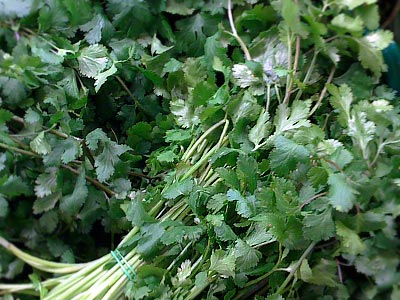 Cilantro actually refers to the leaves of the coriander plant. When you encounter the terms “fresh coriander” or “coriander leaves,” these terms actually refer to cilantro. It can also be called Chinese parsley or Indian parsley. Among the Vietnamese, cilantro is called ngo.
Cilantro actually refers to the leaves of the coriander plant. When you encounter the terms “fresh coriander” or “coriander leaves,” these terms actually refer to cilantro. It can also be called Chinese parsley or Indian parsley. Among the Vietnamese, cilantro is called ngo.
The coriander plant, which botanists call Coriandrum sativum, belongs to the parsley family. In fact, cilantro is often mistaken for Italian parsley, and these two plants are indeed related. The coriander plant is an annual-growing herb, and the plant can grow up to 20 inches in height. The shape of the leaves vary; the leaves at the base of the plant appear lobed while the ones near the top and on the flowering stems are slender and lacy. Coriander can bear white or pale pink flowers, and coriander seeds are also widely used in cooking.
It should be noted that although cilantro and coriander seeds both come from the same plant, they are not interchangeable when it comes to using them for cooking. Cilantro leaves can be very pungent, and some find it bitter to the taste. In fact, a lot of people, particularly Europeans, are not able to stand the smell of cilantro because it is akin to that of crushed bedbugs. Coriander seeds, on the other hand, are pleasant to the nose and have a warm, citrusy flavor. For North Americans, cilantro reminds many diners of Mexican foods, particularly the popular Mexican salsa for dipping.
Relation to Vietnamese Coriander and Long Coriander (Culantro)
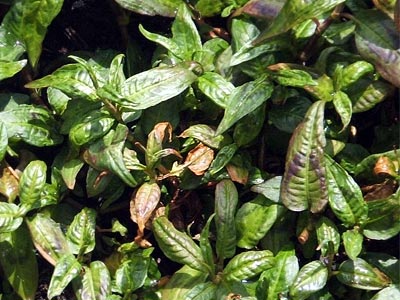 Although cilantro is a common ingredient in Viet and other Asian dishes, people who are not familiar with the plant often mistake Vietnamese coriander and long coriander for cilantro. These three herbs are essentially different even though they are all called coriander plants. Vietnamese coriander (rau răm) is what the westerners call the laksa plant. They also call the plant Vietnamese mint although the plant itself is not even closely related to the mint plant.
Although cilantro is a common ingredient in Viet and other Asian dishes, people who are not familiar with the plant often mistake Vietnamese coriander and long coriander for cilantro. These three herbs are essentially different even though they are all called coriander plants. Vietnamese coriander (rau răm) is what the westerners call the laksa plant. They also call the plant Vietnamese mint although the plant itself is not even closely related to the mint plant.
While Vietnamese coriander is just as widely used as cilantro in Southeast Asian cuisine, the similarity between Vietnamese coriander and cilantro end in the fact that they have a slightly similar smell. The leaves of the Vietnamese coriander are long and broad, and it has knotted stems. 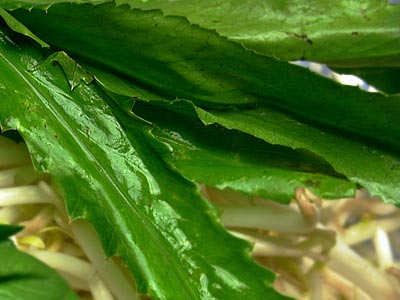
Long coriander, on the other hand, is also known as saw leaf herb or culantro (ngò gai.) It also belongs to the parsley family, just like cilantro. And just like cilantro, long coriander/culantro can be found as a garnish in pho rather than a main source of flavor during the cooking process. Long coriander has an odor similar to cilantro, but the taste is much stronger. Those who love pho are familiar with its long and thorny leaves.
The History of Cilantro
Cilantro is said to be the oldest herb to be used by man. There were evidences of coriander being cultivated during Neolithic times. Ancient Egyptians are known to grow and use coriander, and there is a reference to coriander in the Old Testament of the Bible. The coriander plant is native to the middle-eastern regions of Asia and in Southeastern Europe. Through trading and migration, the plant made its way to China and then to Southeast Asia, where it was used in salads, rolls and soup noodle dishes like pho. The Spaniards who came to Asia brought the coriander plant to Mexico, where cilantro became a vital ingredient in salsa and other Mexican dishes. From Mexico, the use of cilantro spread to the western and southwestern areas of the United States.
The Role of Cilantro in Pho
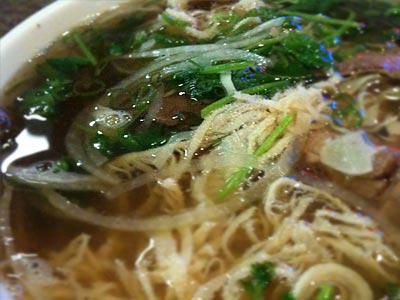 There are two major influences in Asian cuisine, and they are those of India and China. China’s influence has strongly marked Viet cuisine (Vietnam was under Chinese rule for a thousand years,) and among the Chinese cooking principles adopted by the Vietnamese is the principle of balance. This principle states that all the five tastes – salty, sour, spicy, sweet and bitter – should be present and existing in perfect harmony with each other in every dish.
There are two major influences in Asian cuisine, and they are those of India and China. China’s influence has strongly marked Viet cuisine (Vietnam was under Chinese rule for a thousand years,) and among the Chinese cooking principles adopted by the Vietnamese is the principle of balance. This principle states that all the five tastes – salty, sour, spicy, sweet and bitter – should be present and existing in perfect harmony with each other in every dish.
Cilantro is known for its somewhat bitter taste. Some people have even gone to the extent to describe the taste of cilantro as soapy and have made a point of avoiding eating it. But it can nonetheless be said that cilantro provides the bitter element in a bowl ofpho. For me and many Viet, cilantro gives a very nice, pleasant fragrance. The one thing about cilantro is that it is best eaten fresh. When it is cooked or when it is left exposed for a long time, it loses its flavor. Thus, when preparing a bowl of pho, chopped cilantro is usually the last ingredient to be put in the bowl assembly, sprinkled over the noodles and the meat. The hot broth is then poured over it, and the bowl is served immediately.
The Health Benefits of Cilantro
For all its bitterness, cilantro is actually a very healthy herb to eat. It is rich in vitamins, minerals and other nutrients, namely: iron, potassium, calcium, folate, lutein, beta-carotene and vitamins A, B6, B12, C, E and K. Cilantro also has a number of desirable medicinal qualities. It is quite well-known for helping to stimulate the appetite and to secrete gastric fluids that digest food. The herb can also aid in lowering bad cholesterol levels as well as blood sugar levels in the body. It also has the ability to cleanse the blood and to fight infection. You are very likely to find cilantro in the majority of Viet dishes. Whatever you order at a restaurant, you'll probably have cilantro with it.
Growing and Harvesting Coriander
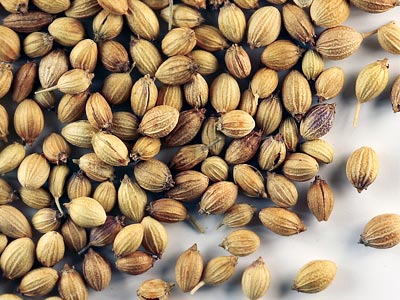 The coriander plant is an annual herb, meaning it can grow and flourish any time of the year. It can also grow indoors and outdoors as long as it is not exposed directly to sunlight, especially during the hottest hours of the day. The plant also grows quickly and you want to replant every six weeks for a steady supply of these herbs in the kitchen.
The coriander plant is an annual herb, meaning it can grow and flourish any time of the year. It can also grow indoors and outdoors as long as it is not exposed directly to sunlight, especially during the hottest hours of the day. The plant also grows quickly and you want to replant every six weeks for a steady supply of these herbs in the kitchen.
In order to plant coriander, its seeds must first be prepared. The husks are cracked slightly and the seeds are soaked in water for 48 hours. The seeds are then planted in a pot or in a bed at around three to four inches apart from each other and covered with a layer of soil about a quarter of an inch thick. If the coriander seeds are planted indoors before transplanting to a garden outdoors, the transplanting must be done when the plant has grown two inches tall. Once the transplanting is completed, the watering must be done constantly.
When the coriander plant begins to bolt, meaning to produce flowers and seeds, its leaves cannot be eaten anymore. Cilantro, the leaves, must be harvested once every week to make the plant last longer and to prevent bolting temporarily.
When harvesting cilantro, a few leaves must be left on the stem of the plant so that the plant can continue feeding itself. Only clean and sharp planting scissors must be used to harvest cilantro. Once the coriander plant has bolted, the seeds can be gathered for replanting.
There you have it. The lowly cilantro in fact has a long history of its own. Cilantro never takes the center stage, but you can't have pho without it.

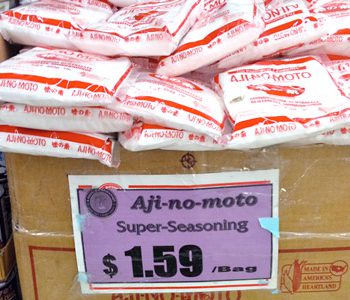

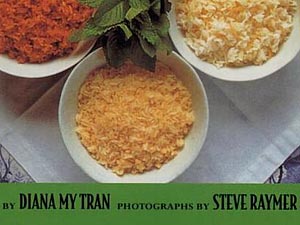
In Melbourne Australia it’s actually quite rare in my experience to be offered cilantro with your pho. Here it’s usually called coriander and you might find a couple of stray leaves in your bowl, but you are overwhelmingly likely to find Thai or holy basil on the garnishes plate. I usually go non-traditional and order a vegetarian “pho” (in chicken stock) from my favourite place, but I’ve ordered the traditional beef pho there too and it doesn’t come with coriander. I love fresh coriander and wouldn’t complain if it was offered 🙂
@Anh-Dao: Thanks for sharing your experience. It’s strange that you say cilantro/coriander is not a standard offering garnish for pho in Melbourne. Can you clarify: is it one or several or many/all pho restaurants?
Cilantro/coriander is a basic garnish, and together with green onion, is a standard pho garnish served from the kitchen. Of course there are customer exceptions (such as my business partner who always requests chopped onions to be omitted), but I think it is inexcusable that a pho restaurant does not serve cilantro/coriander. If you can get Thai basil served to you, cilantro/coriander must also be available too. My restaurant can get fresh cilantro/coriander in the dead freezing winter in Montana, so how can you not get it in Melbourne? I don’t get it 😮
I’d suggest, the next time you order pho, please ask them, no, insist, that you would like cilantro/coriander with your pho. Let us know how you make out.
Hi, coriander is freely available in Australia (well melbourne anyway) so it’s not any shortage that’s causing it. I’ve only been to a few pho places as there are so many of them here. My recollection is the garnish plate (you always get one – the Melbourne preference must be for southern-style pho) contains Thai basil, and sometimes Vietnamese mint which isn’t really a mint. There might be a bit of coriander in the soup although there’s more likely to be chopped spring onions (I think you call them green onions). You often get a couple if bits of sliced raw or cooked white bulb onion too. And the chillies are usually chopped red Thai bird’s eye ones.
@Anh-Dao: Sorry I misunderstood you. Sounds like the restaurants are serving pho correctly: Chopped onions and coriander/cilantro partially cooked in the hot broth when served to the table, and the garnish plate contains optional fresh/uncooked garnish and herbs to be added to the bowl by you, the customer. Normally A Vietnamese customer would not expect cilantro/coriander on the garnish plate, only in the hot pho broth. Of course, you can request to be served differently and most Viet restaurants will oblige.
Hi, thanks for the clarification the coriander shouldn’t be on the garnish plate but in the broth. I obviously am not explaining myself very well though – my point was it’s rare, in my experience of 5-6 places round Melbourne, to find any coriander anywhere. Two lonely leaves or 1cm bits of stalk might appear but that’s about it! 🙂 Others here may have a different experience.
PS yesterday I had “rice noodle soup” at a Chinese takeaway – it wasn’t pho but I was desperate and there were no other options. I got a plate of bean shoots and chilli, but also…..SWEET basil! Made for an interesting soup 🙂
@Anh-Dao: If what you experienced is true then I think you’ll just have to ask to find out why they don’t serve it as a standard ingredient. It seems this is a no brainer: coriander/cilantro is what the vast majority of Vietnamese (and others who know pho) expect in pho, there is no shortage of it, and it does not cost much. In any case, ask them why they don’t serve it. The answer may be interesting.
Normally Chinese dishes do not serve basil of any kind. This sounds like a Chinese restaurant trying to offer pho to get more business, but they use the wrong basil. It should be Thai basil. And again, Thai basil should be in abundance in your locality and a key garnish ingredient.
Cilantro is probably the worst flavour in the known universe, it taste like soap and instects. I mean the 3 contain the same chemical that causes that taste.
@Derek: That’s a strong opinion about cilantro. Don’t know where you’re from, but in many parts of the world, cilantro is very common and popular ingredients in well-known national dishes. Banh mi without cilantro? It’s really not quite complete. Salsa without cilantro? No effing way! It is true that many ingredients aren’t palatable if just eaten by themselves. I guess it depends on context and more importantly, how you use cilantro. If I eat hot chili pepper all by itself, I’d probably think it’s the worst thing in the known universe as well. I’m just glad that, over thousands of years of culinary arts, people have the creativity and guts to say “Hey, this would go great with [fill in the blank]”.
Many people of European descent, roughly 20%, produce an enzyme on our tongues which cause Cilantro and Coriander seeds to taste like soap. Some 5% of the rest of the world experience this same taste. My mom and I hate cilantro, my sister and dad love it. Go figure.
If you want to know what cilantro tastes like to us, squeeze some Palmolive in your mouth.
@El Goido: Hey thanks for a very well thought out comment. I do know that cilantro or coriander tastes a bit like soap, and oftentimes quite bitter too. I do actually taste a hint of soap myself, especially when too much of it ends up in my mouth in an amount that is disproportionate with other things in the same bite. I did spent sometime in West Germany (back then) and noticed a strange absence of this herb in German dishes.
Also I think the leafy part tastes differently compared to the stem, which is one reason why many Americans only use leaves while we Viet people use pretty much the whole thing. I was training an American (caucasian) cook to chop cilantro for pho, and noticed he stripped out all the stems and chopped only the leaves. We discussed it and that’s when I learned of this interesting difference; he said that’s what he’d been trained to do by other chefs. We both agreed that for pho with its hot broth, having the tougher stem pieces does help it stand up and stay/look fresh in the bowl. Otherwise you’d only have cooked and wilted cilantro leaves.
Awesome comment.